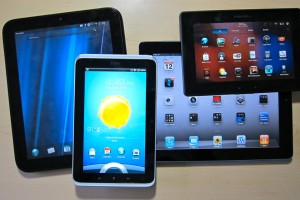The market for tablets is competing at a lower-price range. More companies (Amazon, Barnes, Tesco) are willing to produce low price tablets. Although such products do not produce high profit for the company, the business strategy is to link them to other products that the company offers. This would give consumers a feeling that they are facing a really good deal on a product, but after they purchase it, there might be other products linking to the previous one, that they need to buy as well in order to make them function together. (Well, I would think it’s still a good deal.)
It is likely in the future that more people will be using these products because they are cheap and they can provide mostly what Apple, Google, and Samsung do. However, it is true that they are not as efficient, but there is a wide range of customers interested in these kind of products because they cannot afford expensive tablets. I would conclude that these companies are managing with a cost leadership strategy where products are linked to one another and the companies are competing at a low-cost range.



